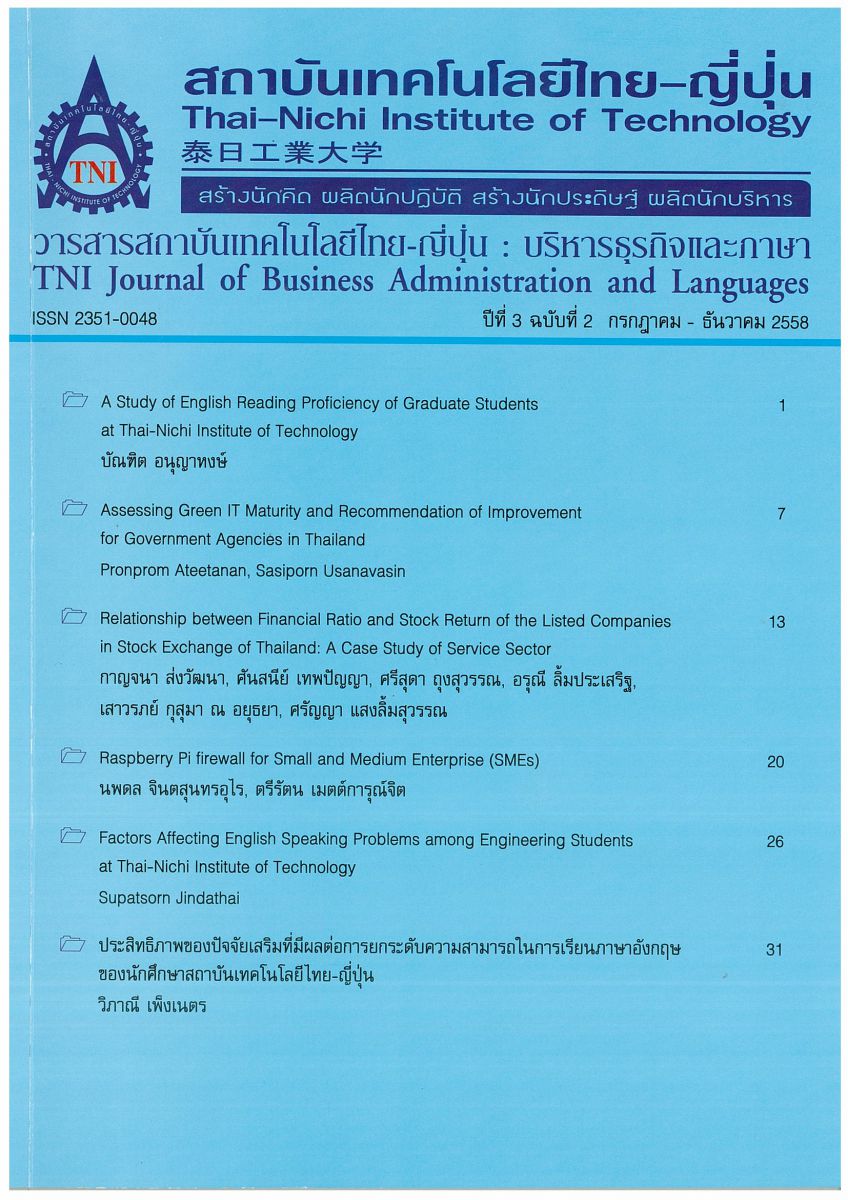Exploration of Suspected Relationships between Customer Satisfaction, Customer Loyalty and Customer repurchase behavior
Main Article Content
Abstract
With respect to traditional models projecting positive relationship between customer satisfaction and customer repurchase behavior, there have been a gigantic number of empirical studies supporting this conceptual relationship. There, however, have been a lot of investigations postulating the weaken relationship and insignificant associations. Some research presents the mediating roles of customer loyalty in the rapport. Meanwhile, some research suspects the mediating roles of the customer loyalty. Furthermore, recent literature specifically
displays the effect of the preference of communication channel on customer satisfaction and result in the customer purchase retention. Unfair exchange induces non-satisfaction of customer. Interestingly, previous research finds the variety-seeking trait of customers negatively affecting on customer repurchases. Conclusively, the previous research shows various effects of the various independent, mediating, and moderating variables deviated from the conventional relationship.
This research, therefore, aims to examine what and why the new significant and modified independent variables, mediating constructs, and the moderating conditions support and reject the traditional models. Original contributions are the findings of the aforementioned constructs predicting and developing the nontraditional models by exploration research approach conducted through observation and face-to-face interview in the Thailand’s automobile context.
Article Details
Article Accepting Policy
The editorial board of Thai-Nichi Institute of Technology is pleased to receive articles from lecturers and experts in the fields of business administration, languages, engineering and technology written in Thai or English. The academic work submitted for publication must not be published in any other publication before and must not be under consideration of other journal submissions. Therefore, those interested in participating in the dissemination of work and knowledge can submit their article to the editorial board for further submission to the screening committee to consider publishing in the journal. The articles that can be published include solely research articles. Interested persons can prepare their articles by reviewing recommendations for article authors.
Copyright infringement is solely the responsibility of the author(s) of the article. Articles that have been published must be screened and reviewed for quality from qualified experts approved by the editorial board.
The text that appears within each article published in this research journal is a personal opinion of each author, nothing related to Thai-Nichi Institute of Technology, and other faculty members in the institution in any way. Responsibilities and accuracy for the content of each article are owned by each author. If there is any mistake, each author will be responsible for his/her own article(s).
The editorial board reserves the right not to bring any content, views or comments of articles in the Journal of Thai-Nichi Institute of Technology to publish before receiving permission from the authorized author(s) in writing. The published work is the copyright of the Journal of Thai-Nichi Institute of Technology.
References
A. Godfrey, K. Seiders, and G.B. Voss, “Enough Is Enough! The Fine Line in Executing Multichannel Relational Communication,” Journal of Marketing, 75 , pp.94 –109, July. 2011.
C. Agustin, and J. Singh, “Curvilinear Effects of Consumer Loyalty Determinants in Relational Exchanges,” Journal of Marketing Research, 42, pp.96–108, Feb. 2005.
C. Benne, J.M. Mugica, and M.J. Yague, “The Effect of Variety-Seeking on Customer Retention in Service,” Journal of Retailing and Consumer Services, 8, pp.335-345, 2001.
C. Wen, V.R. Prybutok, and C. Xu, “An Integrated Model for Customer Online Repurchase Intention,” Journal of Computer Information Systems, 52(1), pp.14-23, 2011.
D. M. Szymanski, and D. H. Henard, “Customer Satisfaction: A Meta-Analysis of the Empirical Evidence,” Journal of the Academy of Marketing Science, 29(1), 16, 2001.
E. Delgado-Ballester, and J. L. Munuera-Alemán, “Brand Trust in the Context of Consumer Loyalty,” European Journal of Marketing, 35(11/12), pp.1238–1258, 2001.
F.F. Reichheld, and Jr. Sasser, W.E. “Zero defections. Quality comes to services,” Harvard Business Review, 68(5), pp.105-111, 1990.
F.F. Reichheld, and K. Aspinwall, “Building High-Loyalty Business System,” Journal of Retail Banking, 15(4),pp.21-30, 1993
G.Balabanis, N. Reynolds, and A. Simintiras, “Bases of e-store loyalty: Perceived switching barriers and satisfaction,” Journal of Business Research, 59(2), pp. 214-224, 2006.
G. B. Voss, A. Godfrey, and K. Seiders, “How Complementarity and Substitution Alter the Customer Satisfaction–Repurchase Link,” Journal of Marketing, (74), pp.111–127, 2010.
I. Qureshi, Y. Fang , E. Ramsey , P. McCole, P., Ibbotson, and D. Compeau , “Understanding Online Customer Repurchasing Intention and the Mediating Role of Trust – An Empirical Investigation in Two Developed Countries” European Journal of Information Systems (18), pp.205 –222, 2009.
J.J. Cronin, M.K., Brandy, and G.T.M. Hult, “Assessing the effects of quality, value, and customer behavioral intentions in service environments,” Journal of Retailing, 76(2), pp.193-218, 2000.
J. J. Zboja, and C. M. Voorhees, “The Impact of Brand Trust and Satisfaction on Retailer Repurchase Intentions,” Journal of Services Marketing, 20(5), pp.381– 390,2006.
J.W. Creswell, Qualitative inquiry and research design: Choosing among five approaches (2nd ed.),Thousand Oaks, CA: Sage, 2007.
Kwon, Kyoung-Naa, and Jain, Dipti “Multichannel Shopping Through Nontraditional Retail Formats: Variety-Seeking Behavior with Hedonic and Utilitarian Motivations,” Journal of Marketing Channels, 16, pp.149-168,2009.
R.L. Oliver, Satisfaction: A Behavioral Perspective on the Consumer. New York: McGraw Hill, 1997.
S. O. Olsen, “Repurchase loyalty: The role of involvement and satisfaction,” Psychology & Marketing, 24(4), pp.315-341, 2007.
S.Y. Lam, V. Shankar, M. K. Erramilli, and B. Murthy, “Customer Value, Satisfaction, Loyalty, and Switching Costs: An Illustration From a Business-to-Business Service Context,” Journai of the Academy of Marketing Science, 32 (3), pp.293-311,2004.
V. Mittal, and W. A. Kamakura, “Satisfaction, Repurchase Intent, and Repurchase Behavior: Investigating the Moderating Effect of Customer Characteristics,” Journal of Marketing Research, 38, pp. 131–42, Feb. 2001.
W.G. Zikmund, Business research methods (7 th ed.). Mason, Ohio USA: Thompson - South-Western, 2003.


